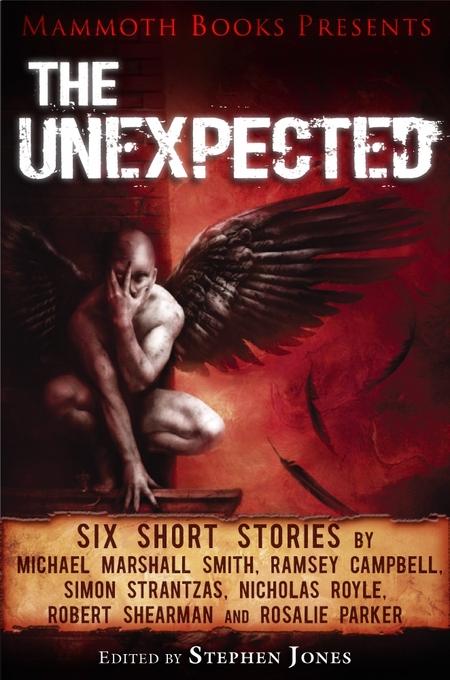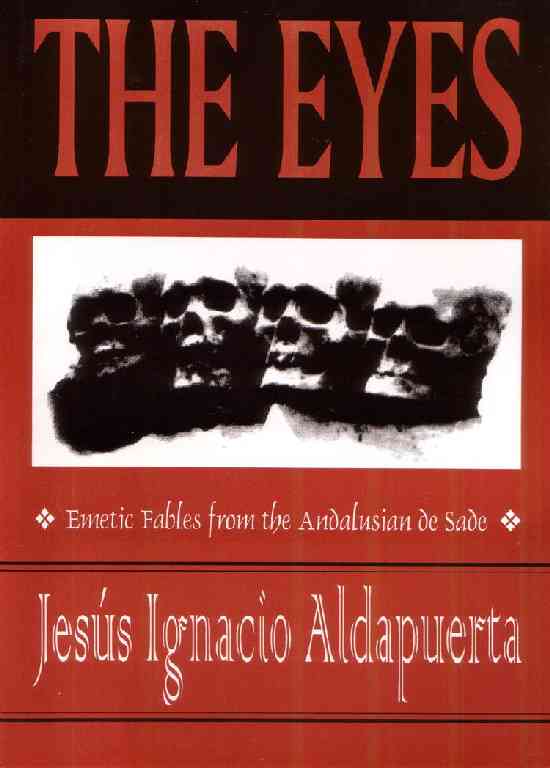 This 74 page collection by Mammoth Books contains six short stories.
This 74 page collection by Mammoth Books contains six short stories.
Michael Marshall Smith’s “What Happens when you Wake Up in the Night” mines the most profitable vein of horror: childhood fear. A young girl wakes up in the night, and things are not as they should be. She wakes her parents, but only succeeds in bringing them into the nightmare. The story is told from a child’s perspective, thus the story’s creepiness is filtered through a layer of childlike credulity and acceptance of what is happening. There’s a point where a story like this should end, and I think this one steps over the line by just a little.
“Respect” by Ramsey Campbell comes next. No go.
“Cold to the Touch” by Simon Strantzas is excellent. A creepy and otherworldly setting, a strong cast of characters, and an ending that seems pregnant with possibilities. It reminds me a little of Stephen King’s “N”, although the two stories share nothing except a circle of stones.
“The Reunion” by Nicholas Royle is a tribute to Poe’s “William Wilson.” A man and his wife attend a 20 year high school reunion, and find that past and present are in quiet collision. The piece is creepy and powerful, both for its plot and its sense of dislocated wrongness.
Robert Shearman’s “Granny’s Grinning” will resonate with anyone who has endured a Christmas with miserable people. A family spends Christmas day with an older relative who has just lost her husband, (and she’s is the only one who can save them from financial ruin). “Granny’s Grinning” starts out innocuous and funny, and then whiplashes into genuine nastiness. There’s no transition. It’s a sudden change of tone, but an effective one.
“The Garden” by Rosalie Parker ends the volume. The story is shorter and more poetic than the others. It follows the format of “The Man Who Loved Flowers”…a beautiful picture with something awful at the center, but the awful thing is handled as lovingly as the rest of the picture. It apparently comes from a challenge to write a horror story entirely about gardening.
The Ramsey story was just annoying but the other five a good. This book is worthwhile, I was pleasantly surprised by much of what’s on here. Any flaws The Unexpected has are probably incipient to the short story medium. These tales are easy to get into, but maybe a little too easy to leave behind as well.
No Comments »
 As per the opening kayfabe, The Eyes was written by a deceased madman called Jesus Ignacio Aldapuerta who fashioned sex toys from the bones of children.
As per the opening kayfabe, The Eyes was written by a deceased madman called Jesus Ignacio Aldapuerta who fashioned sex toys from the bones of children.
I don’t want to be the guy who says there’s no Santa Claus, but this wouldn’t be the first time someone ghostwrote an “alternative” book under the name of an imaginary lunatic. The true author of The Eyes is apt to be alive, sane, and well, and has likely done no more than give himself a backrub with the bones of children, if even that.
But that’s neither here nor there. The Eyes is disgusting, unforgettable, hard to read, harder to stop reading. I have read only a few books like it. One of them is Satanskin by James Havoc, another hoax author. He died in 1999…and was so dead that he reappeared in 2009 and started writing books again. Anyway, like Satanskin, The Eyes contains short stories meant to give you an inside view of hell. Some stories offer but a peek. Others give you the grand tour.
Pedophilia, cannibalism, it’s all here. Some stories (“Armful”) are so ugly that a summary would sound hyperbolic no matter what words I use. Generally, the tales in The Eyes provoke one of two reactions. The first is a horrified “WHAT?!” The second is like what you feel immediately after stepping on a nail. You don’t feel much pain, not at first, but there’s the sense that you’ve done yourself severe trauma.
Aldapuerta is one hell of a writer. James Havoc has a tendency to pile on the purple and overwrite beyond the point of self-parody, but The Eyes is lean and to the point. It’s not without a poetic edge. Aldapuerta’s forte is the quickfire mot just. “Her hot little leaf of a hand.”…”the pale leaping tongues of his semen”…etc. Neat.
“Ikarus” is the most terrible creation in The Eyes, not a story but a black detonation of horror. A man explores the hull of a B-17 bomber, and discovers something that never will be explained, never could be explained, and never should be explained. “Ikarus” is almost a net liability to the book, as the other stories come up short next to it.
As it nears the end (its end, not yours), The Eyes gets increasingly strange. As the nostalgic schoolmaster’s fantasy of “Upright” ends, “The Winnowing” begins, which largely consists of a Czech man filling out a form. The final sentence…what am I supposed to take from that? That he was being sterilised? The book finishes with “Pornoglossia”, a list of words the author has invented for use in your own Marquis de Sade ripoff. The verb “Raí”, for example, means using an empty eye socket as a sexual orifice. These words are in little danger of making their way into Merriam-Websters’ in the near future.
There may not be a hell, but Aldapuerta (or Whitechapel, or whoever wrote this) have proven that it is possible to create one on the page. The Eyes is genuinely amazing. Hopefully some day Aldapuerta will return to life, pick up his child femur pen, and write a new collection of stories.
No Comments »
 Pet Sematary is hardcore 80s King, back when he took drugs, drank like a guy in a Sheb Wooley joke (“I never drink anything stronger than pop, but my pop would drink just about anything”), and didn’t have much time for writing the Great American Novel. If you’re a fan of “literary” King, I honestly don’t know what you’re going to do with Pet Sematary. Maybe use it to line your cat’s litter box.
Pet Sematary is hardcore 80s King, back when he took drugs, drank like a guy in a Sheb Wooley joke (“I never drink anything stronger than pop, but my pop would drink just about anything”), and didn’t have much time for writing the Great American Novel. If you’re a fan of “literary” King, I honestly don’t know what you’re going to do with Pet Sematary. Maybe use it to line your cat’s litter box.
It’s another of King’s “big secret in a small town” tales, featuring scant plot but lots of scares. Louis Creed and his family move to a town that with a small cemetery for pets. Beyond the cemetary lies an old Indian burial ground. When a pet cat is killed, Louis buries it there on the advice on friendly local Jud Crandall.
The cat returns to life. Or does it? Things go bad very fast for Creed and his family. There are consequences when you stamp “RETURN TO SENDER” on the face of death, and soon both he and us are introduced to them in exhaustive detail.
King’s characterisation is always excellent. He has a talent for making characters do irrational things, while not having them seem irrational. The internal logic always holds up. At first your reaction is “what?”, then you forget your misgivings, and soon even you think you would have acted the same way. Mostly, King’s characters are just plain likeable, which makes the later events of the story heart-wrenching.
As always there’s an interesting pile of backstories that gets developed little by little. King’s main characters are always in the spotlight, but there’s the sense that there could be many more stories told about this town. It pays not to speed read, because there’s small details in characters’ backstories that tend to colour and change your perspective on their actions.
Crandall is a fascinating character. He nominally occupies the “Good Guy” seat, yet a lot of his actions are morally turbid, to say the least. There aren’t many positive sides to what he teaches Louis about the pet cemetery, and he ends up coming across like a smiling, do-gooder next door who hands a small child a gun. There is no way he couldn’t have seen what’s coming.
The book’s climax is a steady free-fall into terror, with Stephen King playing with your emotions with one hand while slashing at your guts with the other. The pace is fast, and the ending unforgettable. You can’t really go wrong with an 80s King novel, and this one continues his streak.
I don’t know whether the movie is any good.
No Comments »
 This 74 page collection by Mammoth Books contains six short stories.
This 74 page collection by Mammoth Books contains six short stories.

 Pet Sematary is hardcore 80s King, back when he took drugs, drank like a guy in a Sheb Wooley joke (“I never drink anything stronger than pop, but my pop would drink just about anything”), and didn’t have much time for writing the Great American Novel. If you’re a fan of “literary” King, I honestly don’t know what you’re going to do with Pet Sematary. Maybe use it to line your cat’s litter box.
Pet Sematary is hardcore 80s King, back when he took drugs, drank like a guy in a Sheb Wooley joke (“I never drink anything stronger than pop, but my pop would drink just about anything”), and didn’t have much time for writing the Great American Novel. If you’re a fan of “literary” King, I honestly don’t know what you’re going to do with Pet Sematary. Maybe use it to line your cat’s litter box.